

NOW
WELCOME EDITOR’S LETTER
Dear Valued Clients and Partners,
Welcome to the Q1/2025 edition of “In the Know: General Liability Edition.” As we move into spring, this issue showcases our recent achievements and continued expansion. Inside, you’ll find highlights of our notable case wins, a look at our team “out and about,” a spotlight featuring Partner Michael Roos of our Dallas, Texas office, and insightful articles written by attorneys from each of our offices across the country.
We’re pleased to welcome Partner and Business Unit Leader Kelly Lynn Ferron to our Chicago office, further strengthening Kelley Kronenberg’s General Liability Division which now proudly serves clients in:
● Florida
● Illinois
● Louisiana
● Massachusetts
● Michigan
● New Jersey
● New York
● Texas
● Wisconsin
Additionally, our New York presence continues to grow significantly, with specialized focus on New York Labor Law and construction accidents, as well as fraud defense and EUO representation.
We are also proud to announce the expansion of our practice to include the defense of fire and explosion cases and intentional torts. These specialized areas require nuanced understanding and dedicated experience—precisely what our team brings to the table for every claim we handle.
What sets Kelley Kronenberg apart is our collaborative approach that weaves together knowledge and experience from our twenty offices to tackle your legal challenges regardless of jurisdiction. This borderless approach allows us to provide consistent, high-quality representation with deep understanding of local legal intricacies.
The practice of law never stands still, and neither do we. Your trust drives us to push boundaries and find creative solutions to your most pressing challenges. Thank you for choosing Kelley Kronenberg as your partner in navigating what lies ahead.
Warm regards,


David Henry Chair, General Liability and Transportation Division

Social Media Sleuthing: Can It Make or Break Your Case?
By: Sierra M. DeMartino, Esq. and Starr Linette Brookins, Esq.
The Digital Evidence Game-Changer Technology is evolving fast, with social media now impacting every area of life, including claims and litigation. One post can make or break a case. Courts decide what evidence a jury sees, so knowing what social media evidence is admissible is crucial for claims professionals.
Digital evidence often proves or disproves key facts in a case. A court’s decision on admitting this evidence can significantly affect the outcome. Understanding Florida’s evidence standards helps ensure valuable social media findings make it to trial.
Navigating
the Social Media Evidence Maze
There’s no clear-cut law specifying what social media evidence can be admitted. Florida courts haven’t been consistent in their rulings either. This isn’t surprising when you consider the Florida Evidence Code dates back to 1976, while Facebook didn’t exist until 2004.
The Florida Rules of Civil Procedure were updated in 2012 to address electronically stored information (ESI), but only covered how to obtain it, not how to admit it in court. Without specific rules, we rely on standard Florida evidence principles.
To get social media evidence admitted, you need to:
1. Show it’s relevant to the case
2. Prove it’s authentic
3. Address any hearsay issues
The Relevance Test: Is it Actually Important?
In Florida, evidence must be relevant to be admissible, meaning it must help prove or disprove something important to the case. However, even relevant evidence can be excluded if its value is outweighed by potential unfair prejudice, confusion, or if it’s repetitive.
For claims involving social media, relevant evidence could include:
• A person’s location at the time of an incident (shown by check-ins or geotagged posts)
• Social media use around when an accident occurred, was the Plaintiff distracted, texting or playing on their phone?
• Photos or videos from an accident scene
• Posts contradicting claimed injuries
When Relevant Meets Irrelevant
Consider an auto claim where liability is disputed. The claimant testifies they didn’t
drink alcohol or go to a bar before the accident, but they posted on Facebook:
“Back at my favorite bar with my favorite people,” with a location tag minutes before the crash. This post and its timing are clearly relevant.
However, the number of likes, shares, and the identities of those who commented are likely irrelevant. Focusing on the relevant portions helps ensure admissibility.
Proving it’s the Real Deal
Once you’ve shown relevance, you need to authenticate the evidence. This means proving it’s genuinely what you claim it to be.
If you claim a Facebook post was made by the claimant on a specific date, you must prove that’s true. Here’s how:
The Three Ways to Authenticate
Firsthand Knowledge: Have someone testify who personally knows about the post – either the person who created it or someone who saw them post it. This is usually the easiest method if authorship isn’t disputed.
Extrinsic Evidence: Use evidence outside the post itself. For example, testimony from someone who met the claimant at a bar after seeing their post, confirming they regularly interact on that Facebook account. This helps prove the post is authentic.
Silent Witness Theory: For photos or videos where no witness can testify about the content, Florida courts allow authentication by showing how reliably the media was
produced. Courts look at evidence of when it was created, whether it was edited, the reliability of the equipment used, and identification of people in the images.
After establishing relevance and authenticity, there’s one final hurdle.
The Hearsay Hurdle
You need to determine if the evidence counts as “hearsay” and, if so, if it falls under an exception.
Hearsay is an out-of-court statement offered to prove the truth of what it asserts. Even experienced adjusters and attorneys struggle with this concept. Simply put, evidence is hearsay when you want to use it to prove what was said or done actually happened.
Not all social media evidence is hearsay. Photos, for instance, aren’t statements, so they don’t count as hearsay.
For evidence containing statements, it must fall under an exception to be admissible. Common exceptions include:
• Spontaneous statements made during or immediately after an event
• Excited utterances made while under stress from a startling event
• Business records
• Public records
• Statements by a party used against them in the case
The most useful exception for claims professionals is the last one: party admissions. When you find evidence on a
claimant’s social media and use it against them, it’s usually admissible even if it’s technically hearsay.
Why Social Media Evidence Matters in Claims Handling
Bottom line: social media evidence can significantly impact claim values, drive favorable settlements, and even help win at trial.
Understanding these admissibility rules is essential in today’s digital world. While Florida doesn’t yet have specific laws for social media evidence, courts continue to address these issues. Working with an attorney who knows evidence rules and stays current on court rulings will give you the edge in leveraging social media discoveries.
Key Takeaways for Claims Professionals
When handling claims where social media evidence might be valuable, remember these practical tips:
1. Act quickly: Social media content can be deleted, so preserve evidence as soon as possible with screenshots or other capture methods.
2. Document thoroughly: Record when and how you obtained the evidence, including URLs, timestamps, and account information.
3. Focus on relevance: Identify specific posts or images that directly contradict claims or statements made by the claimant.
4. Connect the dots: Be prepared to explain how the social media evidence relates to specific elements of the claim.
5. Involve defense counsel early: Getting defense attorneys involved at the right time can help ensure proper preservation and authentication of social media evidence.
Our Approach
At Kelley Kronenberg, we work with claims professionals to effectively identify, preserve, and present relevant social media evidence. Our attorneys understand Florida’s evolving standards for digital evidence admissibility and develop practical strategies to navigate these issues. Through our experience in this area, we’ve helped clients successfully leverage social media findings to achieve favorable claim outcomes. If you’re handling a claim where social media evidence could make a difference, we’re here to help.


The Costly Comma That Lost a General Contractor’s Indemnity
Claim
Why Strict Construction of Indemnity Clauses Matters
By: Jessica A. Clark, Esq.
New York’s First Department has once again emphasized that indemnity clauses mean exactly what they say—no more, no less. Courts won’t read between the lines when it comes to who pays for what. This makes it crucial to understand precisely what your contract language covers before assuming you can pass liability to someone else.
Missing this detail can lead to an unwelcome surprise years later when a court denies an indemnity claim you were counting on.
When a Falling Cinderblock Creates a Legal Precedent
In a recent case, Orellana v. 5541-1274 Fifth Avenue Manhattan LLC , Plaintiff alleged he was a construction worker laying brick at a worksite when he was struck by a cinderblock. The appealing defendant was the general contractor (the “GC”) for the project, who retained a subcontractor (the “Sub”), the respondent, to perform certain work, including installation of a concrete masonry unit. The respondent subcontractor in turn sub-subcontracted with Plaintiff’s employer. The cinderblock that struck Plaintiff had been placed on a tarp by workers employed by another subcontractor, and when the wind blew, fell on top of Plaintiff.
The Critical Contract Language
BEHIND THE
The subcontract agreement at issue between the GC and Sub contained the following indemnification provision:
“To the fullest extent permitted by law, subcontractor shall at all times indemnify, protect, defend and hold harmless
Contractor and Owner against any claims, damages, losses and expenses, including legal fees, arising out of or resulting from performance of subcontracted work to the extent which are directly or indirectly caused or contributed to, or claimed to be caused or contributed to, by any act or omission, fault or negligence, whether passive or active in whole or in part, by the Subcontractor, or anyone directly or indirectly employed by the Subcontractor including any sub-subcontractors and subtier contractors thereof and their employees. This indemnification provision applies, without limitation, to the following: [...]
(4) injury to persons (including death) or damage to or destruction of property, including property of the Contractor, Owner or others arising or resulting from the work provided for or performed under this Subcontract or from any actual or alleged act, omission or negligence of the Subcontractor or its agents, employees, subcontractors or suppliers.”
Where Punctuation and Positioning Matter
The GC moved for contractual indemnity against the Sub arguing that the contract contemplated indemnification in the absence
of fault. The lower court denied the GC’s motion and the GC appealed.
On appeal, the GC argued that it should be indemnified for all claims arising out of two separate indemnity triggers that it believed applied:
• For the “acts, omissions, or negligence” of its contractor
• For all claims “arising out of the work” of its contractor
However, the First Department did not agree, and held that indemnification only applied if the incident arose out of the contractor’s acts, omissions, or negligence. Since the GC failed to show that any act or omission by the Sub was connected to the cinderblock that struck Plaintiff, the lower court properly denied the GC’s motion for contractual indemnity.
Specifically, the First Department stated: “while a later phrase in the clause implies that indemnity may be premised on claims merely arising out of the work, that phrase is part of an enumerated list dependent on the terms of indemnity set forth in the first sentence of the clause, and therefore does not modify it.” 234 A.D. at 528. The First Department then went on to stress the importance of strictly construing contract indemnity clauses in order to manifest the parties’ intent.
Understanding New York’s Indemnity Clause Interpretation
In New York, an “arising out of the work” indemnity clause is broad and may be triggered by a contractor’s mere presence at the site, or status as the employer. However,
an “arising out of acts, omissions, or negligence” trigger is narrower, and usually requires some showing of fault or clearer nexus to the cause of the accident.
This case is a reminder of important contractual interpretation and indemnification principles:
• “A contract should not be interpreted so as to render any clause meaningless.” Warner v. Kaplan, 71 A.D.3d 1, 5 (1st Dept. 2009)
• A party is entitled to contractual indemnification only in those circumstances where the intention to indemnify can be “clearly implied from the language and purpose of the entire agreement and the surrounding facts and circumstances.” Hooper Associates Ltd. v. AGS Computers, Inc. , 74 N.Y.2d 487, 492 (1989)
Practical Takeaways for Insurance Professionals
If you are seeking risk transfer in a case:
• Read the indemnification clause carefully, especially when there are seemingly inconsistent clauses
• Watch for provisions that limit or otherwise qualify other provisions
• Apply common sense contractual interpretation
• Seek out another opinion if you believe there is a potential inconsistency
• Set clear expectations for your carrier/ client about whether to expect full, partial or no pass through
• Document contemporaneous evidence of
subcontractor work performance when a project begins, including photographs, daily logs, and supervision records— this creates a paper trail that can later establish “acts or omissions” if an indemnification claim becomes necessary
Remember that “acts or omissions” determinations are often questions for a jury, whereas “arising out of” can frequently be determined by a judge as a matter of law, sometimes even before discovery concludes. If you are resisting a pass through, be clear about what you need to establish to avoid a judgment of indemnification against you. No matter which side of the indemnity clause you stand on, you should have a clear understanding of what the governing provision(s) say and mean and craft your litigation plan strategically to meet your indemnity goals.
Don’t Let Commas Cost You
Our New York construction and insurance defense attorneys routinely analyze indemnification provisions before litigation begins, identifying potential issues with contract language that might affect risk transfer. At Kelley Kronenberg, our attorneys help clients understand the realistic expectations for indemnification based on specific contract language, rather than general assumptions. Whether you’re a carrier evaluating coverage positions or a contractor reviewing your subcontract agreements, our attorneys can provide practical guidance on indemnification language and its real-world implications.
1 234 A.D.3d 527 (1st Dept. 2025)

French Quarter Tragedy Exposes Security Failures and Legal Questions
By: Elizabeth Austin, Esq.
In the early morning hours of January 1, 2025, tragedy struck at the heart of New Orleans when Bourbon Street, the city’s most iconic attraction, became a scene out of everyone’s worst nightmare .
Hundreds of locals and tourists gathered together to celebrate the New Year were suddenly found themselves in a nightmare that claimed 14 lives and injured dozens more. The catastrophe left an indelible scar not only on those present but on the entire fabric of the City of New Orleans.
Following the tragedy citizens, still in shock and disbelief, continue to ask themselves, “How could this happen in our city?” The question of civil liability for the actions/ inactions of those tasked with preventing this unprecedented tragedy is largely unknown.
Fault: The Five Elements
Louisiana is a comparative fault state, meaning each tortfeasor (the person or business to blame) bears their own share of allocation of fault in causing the tortious conduct.
Under Louisiana’s duty-risk analysis, the determination of liability in negligence cases requires proof of five separate elements:
1. The Duty Element: Whether the Defendant(s) had a duty to conform his/ her conduct to a specific standard;
2. The Breach Element: Whether the Defendant(s)’ Conduct failed to conform to the appropriate standard;
3. The Cause-in-Fact Element: Whether the Defendant(s)’ Substandard Conduct was a cause-in-fact of the Plaintiff’s injuries;
4. The Scope of Liability or Protection Element: Whether the Defendant(s)’ substandard conduct was a legal cause of the Plaintiff’s injuries; and,
5. The Damages Element: Whether the Plaintiff was damaged.
It’s important to note, while not directly at issue in this case, Louisiana law distinguishes between ordinary negligence and gross negligence. Gross negligence requires a much higher degree of fault, defined as showing almost no care whatsoever—the
kind of extreme carelessness that even typically careless people wouldn’t exhibit. It represents a complete disregard for the safety of others and is closer to intentional misconduct than simple negligence.
Foreseeability Under Scrutiny
In the wake of this tragedy, multiple lawsuits have been filed claiming the attack was both foreseeable and preventable. The plaintiffs assert that for nearly a decade, a wide range of parties—including New Orleans officials, public safety personnel, consultants, and contractors—knew about the specific risk of vehicle attacks on pedestrians in the French Quarter, particularly on Bourbon Street. These lawsuits argue that a series of negligent actions and critical failures to act created the perfect conditions for this deadly incident to occur.
The lawsuits specifically allege that:
• The City of New Orleans mismanaged the bollard replacement project’s timing, leaving Bourbon Street as an obvious target.
• The New Orleans Police Department failed to follow its own security protocols during the early hours of January 1.
• The French Quarter Management District neglected to implement reasonable safety measures, unnecessarily exposing celebrants to risk.
• Mott MacDonald, the engineering firm handling the street reconstruction, failed to recommend barriers capable of stopping a vehicle like the Ford F-150 used in the attack.
• Hard Rock Construction began replacing bollards at the critical Canal Street/
BEHIND THE
Bourbon Street intersection just days before (December 19, 2024), leaving the main entrance to Bourbon Street without fully operational protection during New Year’s celebrations.
Law enforcement officials defended the City’s security measures for New Year’s Eve, pointing out that they had placed temporary barriers, vehicles, and officers throughout the French Quarter. Police Superintendent Anne Kirkpatrick called the attacker a “terrorist” who was “hell-bent on destruction” after he drove a pickup truck around a police car and onto the Bourbon Street sidewalk.
The city highlighted its security investments over the past decade, including barriers and bollards in high-traffic pedestrian areas. After the tragedy, officials released a statement affirming their “commitment to ensuring the safety and functionality of Bourbon Street,” specifically mentioning the bollard replacement project. However, plaintiffs argue that these incomplete security measures may actually strengthen their liability claims against the City and contractors.
The Insurance Battlefield Ahead
This case presents multiple complex coverage issues for insurers of all named defendants. Municipal liability policies, contractor’s professional liability policies, and general commercial liability policies will all potentially be triggered. The critical question for adjusters will be determining where one party’s liability ends and another’s begins within the chain of alleged negligence.
Terrorism exclusions may be invoked by some carriers, though the application will depend on whether the attack meets specific policy definitions of terrorism. Business interruption claims from French Quarter establishments will likely follow as tourism suffers in the wake of the attack.
Policy limits will be another significant concern, as the number of claimants and severity of injuries may quickly exhaust primary coverage, potentially triggering excess and umbrella policies. Early investigation of contractual risk transfer between the City, engineers, and contractors will be essential for determining ultimate liability allocation.
As these lawsuits move through the courts, their outcomes will establish critical precedents for how cities protect their most vulnerable public spaces. The legal battle will determine not just who pays for this tragedy, but how every tourist destination in America prepares for the unthinkable. With terrorism now an ever-present threat, municipalities across Louisiana—and indeed the nation— are watching closely. The Bourbon Street massacre may ultimately redefine what constitutes reasonable security in our most cherished public gathering places, forever changing how cities balance celebration with protection.
Considerations for Claims Adjusters
• Document preservation: Immediately secure all records related to bollard installation timelines, security protocols,
and communications between defendants.
• Expert assessment: Retain security and engineering experts early to evaluate whether temporary measures could reasonably have prevented vehicle access.
• Contractual relationships: Carefully analyze contracts between the City and contractors for indemnification provisions and additional insured endorsements.
• Comparative negligence defense: Consider whether the terrorist’s deliberate actions constitute an intervening cause that could reduce defendants’ liability exposure under Louisiana’s comparative fault framework.
Setting the Stage for the Future of Security
Our New Orleans attorneys are closely tracking court decisions from these cases to provide practical guidance to municipal and construction clients. We’re identifying specific liability exposures and defense strategies relevant to security-related claims. Drawing on our experience with multi-party litigation, we’re preparing to handle similar cases with the knowledge gained from studying these proceedings.
Our premises liability and municipal defense attorneys are available to discuss how these developments might affect your specific situation and what preventative measures make sense for your organization.
The Canales Effect: Common Sense Matters
By: Garrett D. Bruner, Esq. and Justin P. England, Esq.
In the Q4 issue of In the Know: General Liability Edition, our Texas office wrote an article on the Texas Supreme Court’s decision in Pay and Save Inc. v. Canales, 691 S.W.3d 499 (Tex. 2024). The decision continues to shape premises liability defense strategy across Texas . It has since been used to examine plaintiffs’ claims at the dispositive motion stage (if granted, can resolve the case or part of it without a full trial), highlighting that plaintiffs must prove two key things: that a truly dangerous condition existed, and that someone knew about this dangerous condition. This provides new opportunities for savvy defense counsel to successfully argue for summary judgment and avoid protracted litigation.
Shifting the Summary Judgement Landscape
Canales clarifies what plaintiffs need to prove to survive summary judgment in premises liability cases. Its main impact is defining what makes a condition “unreasonably dangerous,” but it affects other elements too. Courts now require specific evidence of injury patterns or similar incidents, not just speculation. Plaintiffs can no longer use the
BEHIND THE
injury itself as proof that a condition was dangerous. While Canales doesn’t create a new standard for proving knowledge, its clarification of what makes a condition dangerous has significantly changed how courts evaluate whether someone knew about dangerous conditions. This shift is especially clear in appellate decisions since Canales
The Courts Have Spoken
These cases are a sampling of the courts’ activity in the face of Canales :
In Johnson v. Walmart Stores Texas LLC , the plaintiff was injured when a crockpot fell on her while she was attempting to retrieve the item from the top shelf. The plaintiff argued that Walmart, “was responsible for the dangerously situated upper tiers of the shelving system as well as the items on the shelves, failed to stack the items in a safe manner.” Relying on Canales, the Court explained that common, everyday hazards that shoppers regularly encounter can’t be considered “unreasonably dangerous” if they can be avoided with basic common sense and

caution. Finding for the defendant, the Court found the plaintiff failed to present sufficient evidence that the store’s condition presented an unreasonably dangerous condition.
The subsequent case of Chalmers v. Patel3 involved a plaintiff who slipped on water that escaped from a wheelchair-accessible shower designed to be level with the bathroom floor. The Court rejected the plaintiff’s “should have known” argument, holding that plaintiffs must present direct or circumstantial evidence proving either actual knowledge or that the condition existed long enough that the defendant should reasonably have discovered it.
While not granting summary judgment specifically based on Canales, the case was ultimately resolved due to the defendant’s lack of knowledge of the condition. The ruling reinforced that “landowners are neither insurers of a visitor’s safety nor required to make premises foolproof.” This affirmed aspects of Canales by emphasizing that defendants aren’t required to ensure plaintiff safety and that plaintiffs accept the risk of routine hazards. This strengthens defendants’ dispositive motions when injuries result from routine hazards encountered by premises visitors.
Another major impact of Canales came in Cooper v. HMH Lifestyles 3 . In this case, the Fort Worth Court of Appeals cited Canales as the standard for the required elements for a premises liability claim. This decision highlights how appellate courts are using Canales to hold plaintiffs to a seemingly stricter standard on what constitutes an
unreasonably dangerous condition than was previously used by Courts when analyzing premises liability claims.
Shifting Defense Strategy
Canales has opened the door for defendants to win cases earlier through summary judgment, avoiding costly trials. Texas courts now more readily dismiss cases when plaintiffs fail to satisfy stricter requirements. Defense attorneys should build motions around proving either no dangerous condition existed or the defendant lacked knowledge of such a condition.
Thanks to Canales, plaintiffs are much less likely to prevail in lawsuits over “hazardous” conditions they regularly encounter. Courts now value evidence of similar past accidents more heavily, making it essential for property owners to maintain detailed safety records.
At Kelley Kronenberg, our attorneys are already implementing adaptive strategies, developing stronger dispositive motions that highlight the absence of dangerous conditions and leveraging the heightened evidentiary standards established by Canales.
1This case clarified Texas premises liability evidentiary standards. Since the Supreme Court’s decision in Canales, the decision continues to shape premises liability defense strategies across Texas. In Canales, the Supreme Court ruled that Plaintiffs must show more than the possibility that injury can occur to meet the standard of an unreasonably dangerous condition.
2 No. 05-22-00245-CV, 2023 WL 1782567 (Tex. App. –Dallas Feb. 6, 2023, no pet.)
3 L.P., No. 02-24-00046-CV, 2024 WL 4455846 (Tex. App.
– Fort Worth Oct. 10, 2024, no pet.)

The Brain Claim Game: Navigating TBI Claims in Trucking Cases
By: Kelly Lynn Ferron, Esq.
The Evolving Landscape of TBI Claims
Claims handlers nationwide are seeing a rise in alleged traumatic brain injury (TBI) claims. Trucking claims are particularly vulnerable to TBI allegations, since commercial policies often have limits over $1 million and TBI claims can significantly increase the value of a case. As a result, our understanding of what counts as a TBI has greatly expanded, making these claims more complex than before.
For those of us who have been in the industry for decades, seeing “TBI” in a claim can immediately change how we approach it. We know those three letters often signal a potentially large payout.
Most claims professionals are aware that TBIs come in varying degrees (from concussions to subdural hematomas), the different diagnoses falling under the TBI umbrella have vastly expanded, essentially diluting the traditional meaning of “TBI.”
These days, seeing “TBI” on a claim doesn’t automatically mean you’re dealing with a severe injury. Adjusters need to look at the bigger picture when evaluating these claims from the start. Navigating the various levels of TBIs—and their resulting case values—is crucial in the current landscape, not only to properly assess claims involving TBIs but also to strategically coordinate the defense of these claims through litigation.
New TBI Labels: What They Really Mean
The diagnosis of an “uncomplicated mild TBI” is something we have been seeing recently. Yes, it carries the “TBI” buzz word, but it is not the traditional “serious” TBI. In fact, it includes no significant abnormalities in brain imaging and typically resolves swiftly with rest and without significant medical intervention. We’ve seen “uncomplicated mild TBI” diagnosed even when patients don’t show the required neurological symptoms (which are usually just based on what patients report anyway). That’s why it’s so important to review medical records carefully when you see this diagnosis.
In addition, new to the DSM-V is “mild neurocognitive disorder,” which is becoming increasingly common with TBI claims. This is essentially what we used to refer to as “mild cognitive impairment.” Though some cognitive impairment is involved, a key component to this diagnosis is the claimant’s

BEHIND THE
own complaint about memory problems. Imaging of the brain typically shows deterioration in specific areas of the brain with this condition, and a neuroradiologist can offer valuable guidance in these claims.
The Power of Brain Imaging in TBI Defense
When evaluating TBI claims, understanding what imaging was performed—and what it did or did not show—is essential. Advanced neuroimaging techniques have revolutionized how we identify and assess TBIs, especially now that even a tiny superficial abrasion on the head is being called a “TBI.” Different imaging techniques provide varying levels of detail and can identify different types of injuries.
While standard CT scans and MRIs are common, plaintiffs’ attorneys often use newer techniques like DTI and MRI that claim to show subtle brain changes that are supposedly invisible on regular scans. The key is determining whether any such findings are truly abnormal (or even present), their significance as to brain functioning, and whether they may be accident-related or simply pre-existing conditions.
Claimed Cognitive Deficits
A TBI diagnosis is commonly accompanied by claims of “cognitive deficits,” an impairment in an individual’s mental processes. Like TBIs, the spectrum of what is considered a cognitive deficit has also expanded, now including things such as difficulty sleeping in addition to shortterm memory and executive functioning impairments. Therefore, although the term
itself sounds quite severe, it is not necessarily so.
A plaintiff claiming TBI with cognitive deficits will almost always undergo neuropsychological testing to reveal such deficits. Often, such testing is requested and/or scheduled by the plaintiff’s attorney. Assuming the outcome benefits the plaintiff, he or she will rely on this neuropsychologist to testify as an expert as to: (a) what cognitive deficits are being claimed, (b) how the testing supports those findings, (c) the severity of the claimed deficits, and (d) the effects of the claimed deficits on the plaintiff’s life and future.
Challenging Neuropsychologists and Exposing Flaws in Neuropsychological Testing
Obtaining the plaintiff’s neuropych testing report and all other records as early as possible is key. The next step is to retain a neuropsychologist on behalf of the defendant. This expert will conduct an exam, knowing the exact claims being made and limitations thereof, which will help frame the expert’s opinions. If done well, this positions the defense expert to challenge the plaintiff’s neuropsychologist effectively.
A qualified neuropsychologist can evaluate whether appropriate tests were used and if those tests were administered by qualified professionals pursuant to APA guidelines. They can also verify if raw scores were properly converted and if validity measures were included to detect potential exaggeration. Moreover, he or she can speak on the limitations of the testing plaintiff’s
neuropsych performed, and can assess whether, for instance, plaintiff’s neuropsych used outdated, cherry-picked, or unreliable tests.
Most importantly, a defense neuropsych will tell us whether plaintiff’s alleged cognitive deficits correlate with the specific areas of the brain that were allegedly injured in the accident. Certain areas of the brain are unquestionably related to specific functions. For example, executive functioning deficits generally implicate the prefrontal cortex, while memory issues typically involve the temporal lobe structures. Speech is primarily correlated with Wernicke’s area. Therefore, if Plaintiff’s brain imaging does not match up with the areas of the brain correlated with the specific cognitive deficits being alleged, we have just gained massive leverage to challenge causation and probably set us up for a Daubert or Frye motion to challenge plaintiff’s neuropsychologist.
The Importance of Establishing Baseline Function
Establishing the Plaintiff’s pre-accident cognitive baseline is also essential to Plaintiff’s case, and yet another way to set up viable defenses and expert challenges. Often, plaintiff’s neuropsych will not have any records, brain scans or other objective evidence of baseline functioning at the time of his or her neuropsych exam or prior to issuing his or her report; yet they will still usually render opinions on causation and preloss functioning.
Assessing each case and, if appropriate, conducting targeted discovery can also be hugely beneficial, obtaining:
Pre-loss school/academic records
• Pre-loss therapy, psychological, and psychiatric treatment records
• Pre-loss skills assessments
• Pre-loss testing results (ACT, SAT, MCAT, LSAT, etc.)
• Pre-loss cognitive testing/IQ testing
• Pre-loss neuropsychological testing
These records can provide objective evidence of the plaintiff’s cognitive functioning before the accident, creating a basis for comparison with post-accident assessments.
Overarching Questions:
Therefore, when reviewing TBI claims involving cognitive deficits, consider these key questions:
• Did the neuropsychologist establish a reasonable pre-accident baseline condition?
• How was the battery of neuropsychological tests selected?
• What are the sensitivity and specificity percentages of each test (measures of reliability)?
• What brain areas correlate with the alleged cognitive deficits, and did those areas sustain objective injury in the accident?
Building Your Expert Team
The Expert Advantage in TBI Defense
The initial handling of a TBI claim is crucial. Since TBI claims typically end up in litigation

due to their perceived high value, engaging defense counsel well-versed in these claims early on, who can then bring in specialized medical experts, provides a significant advantage. They can scrutinize the medical records and imaging and find seemingly innocuous details that could, for example, indicate that the TBI was preexisting, or point you to objective medical findings that do not match up with a claimant’s subjective complaints. This, in turn, provides leverage for settlement negotiations, and serves as the basis for damages defenses that will be interwoven and further developed through every stage of discovery and litigation.
Thus, effectively defending TBI claims requires assembling the right team of experts who can accurately evaluate imaging, diagnoses, and brain functioning, and assess and challenge cognitive complaints and deficits as well as identify and expose flaws and weaknesses in testing and methodology.
Depending upon the specifics of each case, there are a number of specialists to consider. Neurologists provide crucial insights on medical aspects and causation opinions. Neurosurgeons offer specialized expertise in structural brain injuries and complex imaging interpretation, along with neuroradiologists. Neuropsychologists conduct a battery of testing to assess claims of cognitive deficits allegedly correlating with the TBI. Psychologists and psychiatrists can address psychological factors contributing to symptoms, distinguishing between genuine TBI issues and other conditions, and can also address claims of PTSD which continue to become more prevalent.
Early engagement of the “dream team” of experts in TBI cases has the potential to drastically reduce the value of plaintiff’s claim by identifying viable damages defenses and issues with plaintiff’s case early on that, in
addition to providing significant leverage for early settlement negotiations, also will only gain strength as they are developed throughout every stage of discovery and litigation.
Conclusion: A Strategic Approach to TBI Claims
As TBI claims become more convoluted, we must ensure that our approach is also evolving. Understanding the wide spectrum of different “TBI” and “cognitive deficits” diagnoses as well as the issues with and limitations of imaging and testing, together with the expertise of the right team of specialists puts us in the best position possible from a strategic standpoint early on that we can only build upon as the claim moves forward.
With my background in psychology, and added interest in the intersection of psychology and anatomy (I am currently enrolled in a neuroscience course through Duke University), together with my years defending trucking TBI and cognitive deficits claims, I have found that blending the science, medical, and psychology knowledge with carefully developed, case-specific legal strategy provides us with a significant edge in these cases, particularly when implemented early on. We assemble and work closely together with a tailored “dream team” of medical experts and with our clients to evaluate, create, and develop tailored defense strategies and defenses for each unique TBI case.
This approach ensures more accurate early claim valuation and helps us to effectively challenge inflated TBI claims throughout all aspects of litigation. Our firm is ready to put this expertise to work for you.

Extra-Contractual Claims and Exposure: What Claims Adjusters Need to Know
By: Eve L. Balistra, Esq. and Andrew A. Labbe, Esq.
Imagine the relief of settling a claim, only to find out a few weeks later that you’ve been accused of unfair dealings or bad faith actions and may be liable for additional damages.
Extra-contractual claims and exposure can be a nightmare for both adjusters and attorneys. These claims extend beyond settlement, potentially leading to punitive damages against the insurer. Understanding what triggers these claims is essential to protecting yourself and your company.
What Are Extra-Contractual Claims?
Extra-contractual claims arise from accusations of bad faith dealing, unfair claims handling, or deceptive acts during the claims process, particularly during settlement negotiations. Extra-contractual exposure occurs when an insurer faces liability outside of policy limits, potentially resulting in attorneys’ fees and punitive damages.
In Massachusetts, two key laws govern these types of claims:
• Chapter 93A: Regulation of Business Practices for Consumers Protection
• Chapter 176D: Unfair Methods of Competition and Unfair and Deceptive Acts and Practices in the Business of Insurance
Both laws significantly impact how insurance companies must operate to limit extracontractual liability and require a nuanced understanding of the interplay between law, insurance claims, and public policy.
Understanding 93A and 176D
Chapter 93A outlines who may file a claim, the filing process, and potential damages, while Chapter 176D specifically defines what acts are considered unfair or deceptive in the insurance business.
Under Chapter 93A Section 9, consumers who believe they’ve been injured due to unfair or deceptive practices may bring an action that requires court approval to be settled. The process requires:
1. Filing a Demand Letter 30 days before filing suit
2. Identifying the alleged unfair/deceptive conduct
3. Specifying the injury suffered
4. Stating that the demand is being brought as a 93A claim
After receiving a Demand Letter, insurers have 30 days to file a Demand Response This response should document:
• Steps taken to reach the settlement amount
• Investigation procedures followed
• Good faith letters and related documentation
Important: Failure to investigate or respond to a Demand Letter may be used as evidence of bad faith, even if the original claim was not made in bad faith.
What Constitutes Unfair Practices Under 176D
Chapter 176D Section 3(9) specifically lists acts or omissions that constitute unfair claim settlement practices, including:
• Failing to maintain prompt communication
• Failing to implement reasonable standards for timely claim investigation
• Not providing reasonable explanations, based on law or policy language, for claim denials
If a court determines that unfair or deceptive acts were committed willfully or knowingly, a violation of 176D automatically triggers a violation of 93A. However, simply filing a 93A Demand Letter does not prove that unfair or deceptive acts occurred.
Can Contractual Limitations Protect You?
Many adjusters assume that insurers can limit extra-contractual exposure through contractual waivers, but in Massachusetts, this protection may be limited.
In H1 Lincoln, Inc. v. South Washington Street, LLC (506 Mass. 369), the Supreme Judicial Court of Massachusetts held that contractual waivers do not preclude multiple damages under 93A Section 11 for willful or knowing misconduct. The court determined that enforcing such waivers would undermine the public policy behind the statute, which aims to prevent businesses from knowingly engaging in unfair or deceptive acts
. While the court specifically addressed 93A Section 11 (business-to-business claims), it suggested that 93A Section 9 claims (consumer claims) might face even greater scrutiny when assessing contractual waivers, given that consumers are presumed to have less contractual knowledge than business entities.
Best Practices for Claims Adjusters
The potential for 93A claims will always exist, but proper precautions can mitigate risks:
1 . Develop standard procedures for determining settlements
2 . Maintain thorough documentation of all claim-related communications and decisions
3 . Respond promptly to 93A Demand Letters with comprehensive Demand Responses
4 . Conduct thorough investigations and document your process
5 . Communicate clearly and regularly with claimants about claim status
6 . Provide detailed explanations for claim denials based on policy language and applicable law
Although this article focuses on Massachusetts law, most states have similar consumer protection laws. Handling extracontractual claims involves complex legal considerations that should be addressed case by case. Our firm’s presence across nine states gives us a unique perspective on these
complex issues, allowing us to identify the most effective strategy for each situation. By understanding these legal principles and following best practices, claims adjusters can significantly reduce their exposure to extra-contractual claims while ensuring fair treatment of policyholders. At Kelley Kronenberg, our attorneys understand the nuances of the laws governing extracontractual claims and routinely counsel our clients regarding the best course of action to defend these claims. If you are facing an extra-contractual claim, we stand ready to partner with you in your defense.












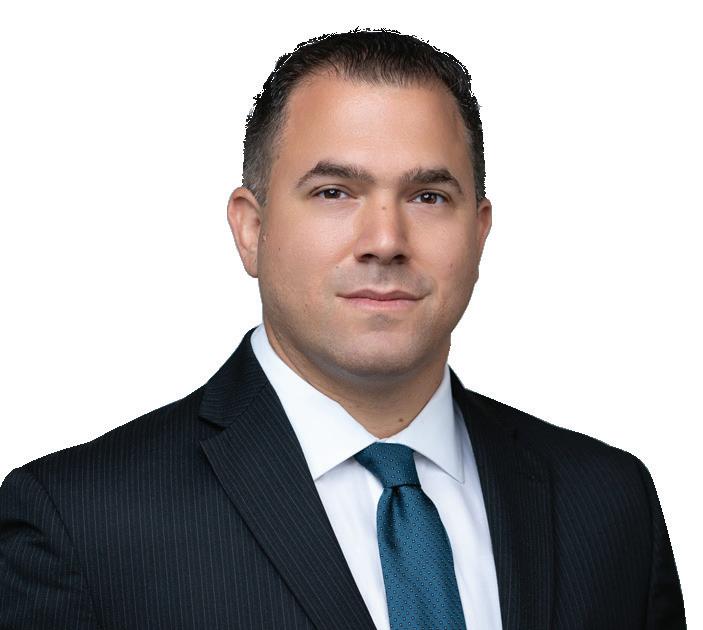



MEET THE
CONTRIBUTORS
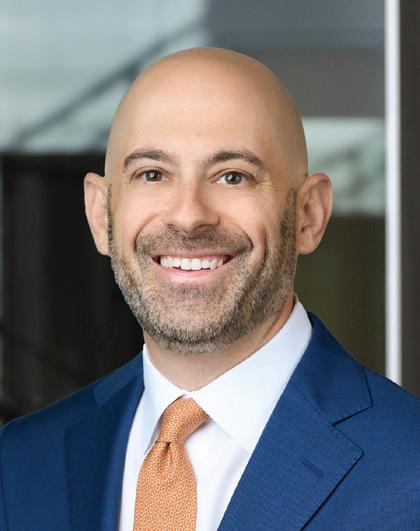
David S . Henry Chair, General Liability and Transportation Division
Fort Lauderdale, FL | New York
David S. Henry

David Henry serves as the Chair of our firm’s General Liability and Transportation Division, which includes our New York Labor Law and Gig Economy Practices. He focuses his practice on high exposure and complex litigation, dividing his time between our Florida and New York offices to assist clients in both states.
David specializes in working with national and international insurers, including the Lloyds of London Market, to defend corporations, municipalities, and individuals facing liability arising from various tort and commercial causes of actions. He has a strong track record of success, securing efficient outcomes as soon as possible, but also wins through voluntary dismissal, summary judgment, trial, and appeal. David has also developed a reputation as a skilled and deliberate negotiator, able to leverage nuanced and intricate coverage positions and defenses to benefit his clients through direct negotiation, and especially, at mediation.
David manages a large and experienced team of attorneys across multiple offices nationwide. Under David’s leadership, the team focuses on the needs of our clients’ cases, identifying the specific caseby-case litigation requirements to bring about
an efficient resolution. The Division’s attorneys emphasize effective communication and client service, regularly updating clients and insurers about each case’s developments.
David’s current practice centers on the most intricate and challenging matters, encompassing a range of complex cases involving New York Labor Law Section 240 cases, bad faith litigation, negligent security, dram shop, premises liability, commercial transportation, product liability, and more.
David boasts a wealth of diverse litigation experience, having skillfully handled a broad spectrum of cases, ranging from defamation, Section 1983 claims, construction defect, toxic tort, medical malpractice, directors’ and officers’ liability, professional malpractice, class action lawsuits, coverage, and matters under the Fair Debt Collection Practices Act. David has also engaged in commercial litigation.
David has been involved in cases with prominent media coverage and a strong community impact. He plays a crucial part in the firm’s Rapid Response Team, ensuring his availability for unforeseen situations, regardless of the time of day.

Elizabeth Hernandez Partner/Business Unit Leader Jacksonville, FL
Email Elizabeth Hernandez

Elizabeth Hernandez is a Partner and Business Unit Leader at Kelley Kronenberg, focusing her practice on general liability and third-party insurance defense.
Elizabeth is a seasoned trial attorney with over 25 jury trials. Before joining Kelley Kronenberg, she worked as a Managing Partner of a prominent nationwide law firm representing clients on complex subrogation matters involving insurance claims. Successfully recovering millions of dollars
on behalf of her clients.
Elizabeth obtained her Juris Doctor degree from the Florida Agricultural and Mechanical University College of Law and a Bachelor’s in Legal Studies from the University of Central Florida.
Elizabeth is a United States Air Force Veteran and proud Florida native who enjoys spending her time with her family outdoors either on the water or on the golf course.
MEET THE
CONTRIBUTORS
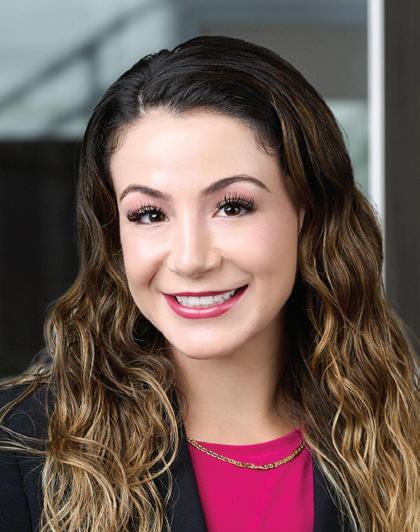
Sierra M . DeMartino Attorney Tampa, FL
Email Sierra M. DeMartino

Sierra DeMartino is an Attorney at Kelley Kronenberg, focusing her practice on general liability & third-party insurance defense.
Prior to joining Kelley Kronenberg, Sierra gained experience in civil litigation where she drafted and prepared motions, notices, affidavits, and discovery requests, primarily pertaining to Paraquat and Camp Lejeune mass-tort claims.
Sierra graduated from The University of WisconsinMadison with Bachelors of Arts in Political Science and Gender and Women’s Studies, earning a spot on the Dean’s list every year. She then obtained her Juris Doctor from Stetson University College of Law, where she excelled in various academic
and extracurricular activities. Sierra worked as a Legal Research and Writing Teaching Assistant for two years after receiving the highest grade in the course. Sierra also served as the President of the Stetson Law Democrats and facilitated and organized numerous beach clean-ups and other pro bono activities through her position. In parallel, she participated in the Dispute Resolution Board and through her experience, Sierra held positions as a captain and member of several negotiation and arbitration teams. She won two First Place Awards in Advocacy Pre-Moot competitions in addition to the Order of the Barrister’s National Award in 2023 for excellence in advocacy.
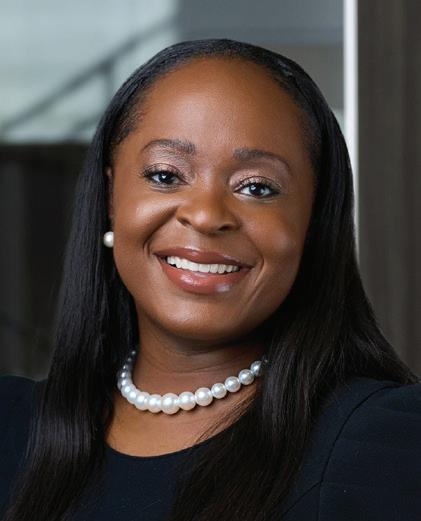
Starr Linette Brookins Partner/Business Unit Leader
Tampa, FL
Email Starr Linette Brookins

Starr Linette Brookins is a Partner and Business Unit Leader at Kelley Kronenberg, focusing her practice on general liability defense. She is an award-winning trial attorney with over thirteen years of experience in courtrooms throughout Florida.
Before joining Kelley Kronenberg, Starr established herself as a formidable litigator across various aspects of civil and appellate practice. She served as a Senior Trial Attorney at a major insurance company, where she successfully managed highvolume litigation involving bodily injury and motorist claims. Her career spans roles as an Associate Legal Advisor handling ad valorem taxation matters, a Litigation Attorney focusing on property coverage and extra-contractual claims, and a Hearing Officer for Hillsborough County where she presides over cases and renders decisions. Her earlier experience includes positions as a Litigation and Appellate Attorney, where she achieved notable successes including a defense verdict, while representing a major insurance company, in federal court that was affirmed by the Eleventh Circuit U.S. Court of Appeals in a case where the plaintiff sought $14.7 million.
Starr earned her Bachelor of Science in Criminology, magna cum laude, from The University of Tampa.
She then obtained her Juris Doctor from The George Washington University Law School as a Presidential Merit Scholar. During law school, she gained valuable experience through multiple prestigious clerkships, including positions with the U.S. Department of Justice’s Office for Civil Rights and Verizon Corporate Legal.
Starr is deeply involved in the community, currently serving as President of the Hillsborough Association for Women Lawyers, Young Women of Promise Chair with the Athena Society, a Volunteer Judge with the Teen Court Program, and a member of the Scholarship Banquet Committee with the George Edgecomb Bar Association. She is the Past Vice President of the Guardian Ad Litem Foundation of Tampa Bay and the Past Chair of the Human Relations Board with Hillsborough County. She holds numerous leadership positions, including serving on the boards of The Regent, The Girl Scouts of West Central Florida, and The University of Tampa Board of Counselors. She has been recognized with multiple accolades, including being named among The National Black Lawyers Top 100, receiving the Florida Association for Women Lawyers’ Leader in the Law award, and being recognized by Best Lawyers®: Ones to Watch.
MEET THE
CONTRIBUTORS

Jessica A . Clark Partner/Business Unit Leader
New
York, NY
Email Jessica A. Clark

Jessica Clark is a Partner and Business Unit Leader at Kelley Kronenberg, focusing her practice on general liability, including construction accidents, premises liability, automobile liability, and New York Labor Law.
Prior to joining the firm, Jessica served as a Partner for a full-service litigation firm, representing construction contractors, building owners, condominium, and cooperative boards, developers, and insurance companies in construction litigation, premises liability, product liability, habitational, and insurance coverage actions. She has worked on the East 51st Street and East 91st Street crane collapse cases, high-profile product liability litigation, and complex habitational claims. In addition, Jessica has argued appeals in the First and Second Appellate Divisions of New York and has obtained many successful outcomes for clients.
Jessica earned her Bachelor of Arts in Economics and Political Science from Bucknell University, graduating magna cum laude. During her time there, she was an active member of the university’s Mortar Board Senior Honor Society and was President of the Alpha Lambda Delta Honor Society. She was also on the golf team.
Jessica went on to pursue her Juris Doctor degree from The University of Michigan Law School. While there, she distinguished herself by participating in the Henry M. Campbell Moot Court Competition. Jessica was also an active member of the Women’s Law Students Association and Phi Alpha Delta Law Fraternity.
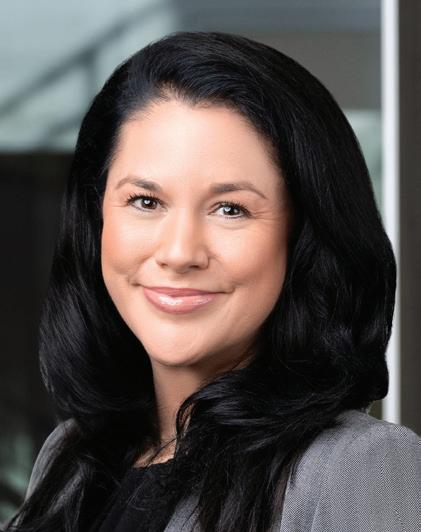
Elizabeth Austin Partner
New Orleans, LA
Email Elizabeth Austin

Elizabeth Austin is a Partner at Kelley Kronenberg, focusing her practice on general liability and firstparty property insurance defense.
Her extensive legal expertise includes insurance defense, subrogation, premises liability, first-party property, trucking liability, workers’ compensation, professional liability, construction law, family law, and personal injury. Her skillful management of lawsuits, from initial pleading to settlement or trial, attests to her ability to handle complex litigation independently.
Elizabeth graduated with a Bachelor of Arts degree in Mass Communications, specializing in Journalism/Public Relations, from Louisiana State University. In addition to her primary studies, she minored in History and French. She furthered her
education at the Paul M. Hebert Law Center at Louisiana State University, where she obtained her Juris Doctor and Bachelor of Civil Law. Elizabeth was an active member of the Moot Court Board and gained valuable trial advocacy experience during her time at the law school. Her dedication and proficiency in her studies were recognized when she was awarded the CALI Award for outstanding performance in Environmental Law and Property Law in Latin America.
Known for her exceptional legal expertise, Elizabeth has been recognized as a Louisiana Super Lawyers “Rising Star” in 2017 and 2018. She was also named an Acadiana Top Lawyer in 2017. These recognitions further highlight her commitment to delivering exceptional legal service to her clients.
MEET THE
CONTRIBUTORS

Michael Q . Roos Partner
Dallas, TX
Email Michael Q. Roos

Michael Roos serves as a Partner at Kelley Kronenberg, where he focuses his practice on general liability, trucking and transportation, and premises liability cases throughout the state of Texas. With his extensive experience in these areas, Michael provides comprehensive legal representation to clients facing complex litigation matters.
Prior to joining Kelley Kronenberg, Michael honed his skills at prominent law firms in Dallas, Texas. He began his career as a litigation associate at a boutique firm, where he represented clients in personal injury cases and gained valuable courtroom experience. Michael then advanced to senior associate and later senior counsel positions
at a national law firm, where he handled highstakes litigation for major corporations, including national and regional trucking companies and property owners. Throughout his career, he has demonstrated expertise in various aspects of litigation, from pre-trial proceedings to appeals.
Michael earned his Juris Doctor from SMU Dedman School of Law in Dallas, Texas, in 2016. During law school, he participated in the Consumer Advocacy Clinic as a Student Attorney and Chief Student Attorney. Before pursuing his legal education, Michael graduated magna cum laude with a Bachelor of Arts in History from Austin College in Sherman, Texas, in 2012, where he ranked in the top 10% of his class.
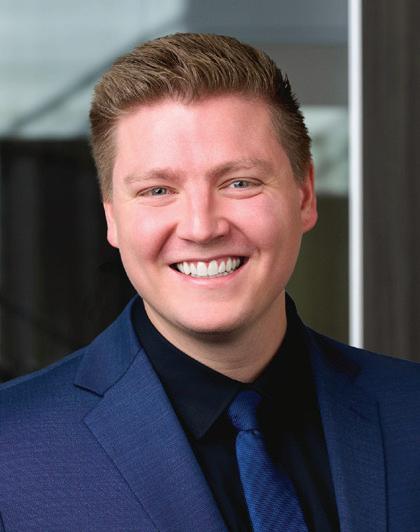
Garrett D . Bruner
Attorney Dallas, TX
Email Garrett D. Bruner

Garrett Bruner is an Attorney at Kelley Kronenberg, focusing his practice on general liability and thirdparty insurance defense matters.
Prior to joining Kelley Kronenberg, Garrett served as a law clerk at a mid-size business law and estate planning firm, where he handled complex business issues, tax analysis, and real property transactions. He previously gained valuable experience at a family law firm, where he developed solutions for intricate legal challenges and gained extensive experience in civil litigation.
Garrett received his Bachelor of Business Administration with dual concentrations in Accounting and Business Administration from Boise State University. He went on to earn his Juris Doctor from Willamette University College of Law, where he served as Competition Chair and Vice President of the Willamette Sports Law Society. During law school, he worked as a Student Attorney in the Willamette University Immigration Clinic, managing multiple clients and appearing in court as Friend of Court.
MEET THE
CONTRIBUTORS

Justin P . England Partner/Business Unit Leader
Dallas, TX
Email Justin P. England

Justin England is a Partner and Business Unit Leader at Kelley Kronenberg, having spearheaded the firm’s expansion into Texas by opening our Dallas office. He focuses his practice on firstparty property insurance defense, general liability defense, and professional liability, including E&O and D&O. He has vast experience handling a broad range of architect and engineering liability claims and construction defect claims.
Justin brings over a decade of litigation experience to Kelley Kronenberg, with significant first-chair trial experience in state and federal courts across Texas. He has successfully managed a diverse range of cases, including product liability, construction defects, catastrophic injuries, real estate disputes, tort litigation, and consumer law matters.
Before joining Kelley Kronenberg, he was a founding partner of a Dallas law office, responsible for the oversight and professional development of associate attorneys. Justin has been recognized for his exemplary legal skill, having been selected for inclusion in Texas Monthly Texas Super Lawyers – Rising Stars for General Litigation consistently since 2014.
Justin earned his Bachelor of Arts in History from The University of Texas at Austin, where he was a member of the University of Texas Ice Hockey Team and participated in a study abroad program in Barcelona, Spain. He then obtained his Juris Doctor from Southern Methodist University Dedman School of Law. While in law school, Justin also studied Legal Studies and International Sales of Goods at University College, Oxford University in England.
Beyond his professional achievements, civic engagement plays a significant role in Justin’s life. He is an active member of several legal organizations, including the Dallas Bar Association, Dallas Association of Young Lawyers, and the William “Mac” Taylor American Inn of Court, where he serves as a Barrister. His commitment to the legal profession is further exemplified by his fellowship in the Texas Bar Foundation. In the greater community, Justin dedicates his time to Big Brothers and Big Sisters of America, demonstrating his passion for mentorship. He is also a member of the Knights of Columbus, Council #5656, and contributes to local education through his involvement with the St. Monica Catholic School Dad’s Club.

Kelly Lynn Ferron Partner/Business Unit Leader
Chicago, IL | Miami, FL
Email Kelly Lynn Ferron

Kelly Lynn Ferron is a Partner and Business Unit Leader at Kelley Kronenberg who focuses her practice on all aspects of general liability and civil litigation defense, including products liability, construction accident, fire and explosion, intentional torts, premises liability, trucking and commercial transportation, negligent security, and automobile liability defense. She is also a part of the firm’s Rapid Response Team.
Kelly brings over fifteen years of experience in catastrophic injury and wrongful death cases, handling extremely high exposure cases throughout the United States. She also possesses the unique skill set to effectively spearhead high stakes drop-in “parachute” cases, rapidly preparing complex litigation for trial when cases are generally
received in close proximity to court dates. She has represented numerous Fortune 500 companies, as well as construction, manufacturing, and trucking companies throughout her career.
Prior to joining Kelley Kronenberg, Kelly worked for the Miami-Dade Public Defender’s Office, followed by two boutique civil litigation firms in Miami, Florida. Thereafter, she served as a Partner at two highly regarded Chicago-based civil litigation defense firms.
Kelly earned her Juris Doctor from the University of Miami School of Law and received her Bachelor of Science in Legal Studies and Psychology from the University of Wisconsin-Madison.
MEET THE
CONTRIBUTORS

Eve L . Balistra Attorney Boston, MA
Email Eve L. Balistra

Eve Balistra is an Attorney at Kelley Kronenberg, specializing in first-party property insurance defense and general liability and third-party insurance defense.
Eve began her legal career as a legal research assistant at a Philadelphia law firm supporting mass tort cases, followed by a role as Coordinator of Appeals at the Delaware County District Attorney’s Office. She then gained valuable experience through various legal externships and clerkships, including positions at environmental and complex litigation firms. Most recently, she was an associate at a Boston-based law firm, where her work focused on issues related to real estate transactions and environmental law
Eve completed dual degrees at Muhlenberg College, earning a Bachelor of Science in Biochemistry and a Bachelor of Arts in History, where she served as Treasurer and Vice President of the Asian Student Association. She went on to earn her Juris Doctor
from Villanova University Charles Widger School of Law, where she served as Diversity Editor of the Environmental Law Journal, Secretary of the Jewish Law Student Association, and participated in the CARES Clinic for Asylum, Refugee & Emigrant Services.
During her academic career, Eve demonstrated a strong commitment to diversity and inclusion initiatives, serving on the Benjamin Franklin American Inn of Court’s Diversity Committee, maintaining active membership in the Asian Pacific American Bar Association, and establishing the first DEI initiative for Villanova’s Environmental Law Journal. Her academic excellence was recognized through numerous honors, including a nomination for the Fulbright Scholarship and receipt of the Pennsylvania Bar Foundation Environmental & Energy Law Section Minority Scholarship.
Eve is fluent in Hebrew and has basic proficiency in Spanish.
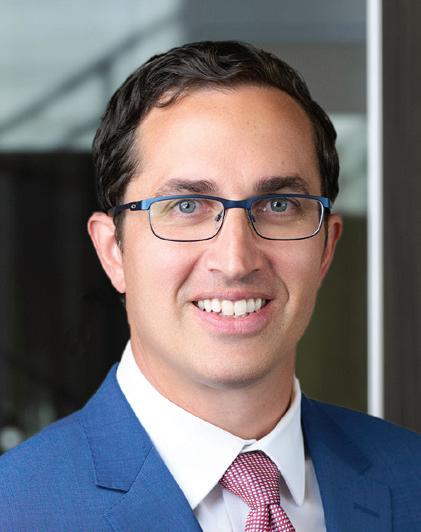
Andrew A . Labbe
Partner/Business Unit Leader
Boston, MA | Tampa, FL | New York , NY | Short Hills, NJ (By Appointment Only)
Email Andrew A. Labbe

Andrew Labbe is a Partner and Business Unit Leader at Kelley Kronenberg, where he specializes in FirstParty Property Insurance Defense and General Liability and Third-Party Insurance Defense. He is a member of the firm’s First-Party Property Appellate Team and is Board Certified in Appellate Law by the Florida Bar, a prestigious designation that recognizes his expertise and experience in appellate practice.
Prior to joining Kelley Kronenberg, Andrew gained extensive experience in various aspects of insurance defense. He has held positions as a partner and chair of an appellate division, where he managed all appellate work from start to finish, including brief writing and oral arguments. His practice areas have included first-party insurance disputes, thirdparty liability claims, coverage opinions, contract disputes, construction defect cases, subrogation, and workers’ compensation defense. Andrew has
also supervised associate attorneys, reviewing their work and providing training on firm procedures and litigation strategies.
Andrew received his Bachelor of Arts in American Studies from the Massachusetts College of Liberal Arts in May 2009. He then pursued his legal education at the University of Florida’s Levin College of Law, graduating cum laude with a Juris Doctor in May 2012. At law school, Andrew excelled academically, ranking in the top 15% of his class with a 3.62 GPA. His accomplishments include being a top four finalist in the Florida Moot Court Competition and winning second-best oralist at the 2012 ABA Moot Court Competition in Atlanta. Andrew earned book awards in Constitutional Law and Estates & Trusts and maintained a place on the Dean’s List from Fall 2010 to Spring 2012. He was also an active participant in The Florida Moot Court Team.
BRIEFCASE BEHIND THE

ATTORNEY SPOTLIGHT
Michael Q. Roos
Favorite way to unwind after a long day?
Dallas, TX
mroos@kklaw.com
Click here for Bio

After a long day, I like to unwind by going for a run. It helps clear my head and work off any lingering stress from the day.
Favorite vacation spot—or one that’s on your bucket list? Why?
My favorite vacation spot would be Italy. It was where I went for my honeymoon. I really enjoyed the food, the people, the history, and the culture.
What’s a proud moment—big or small—you love looking back on?
One of my proudest moments was finishing taking the bar exam and not feeling overly anxious or stressed. I felt like I gave it my all and left everything on the field. Another proud moment was winning my first jury trial. It was a unanimous verdict and the jury awarded everything I had asked for in my closing.
What’s one thing you can’t start your day without?
I cannot and will not start my day without having coffee. I am a zombie in the morning until I have had my coffee.
If you weren’t a lawyer, what do you think you’d be doing?
I grew up in a family that is full of therapists. I like to think that if I was not a lawyer that maybe I would have pursued becoming a therapist. In college I would have said a doctor. But I dropped out of pre-med after taking a few weeks of organic chemistry!
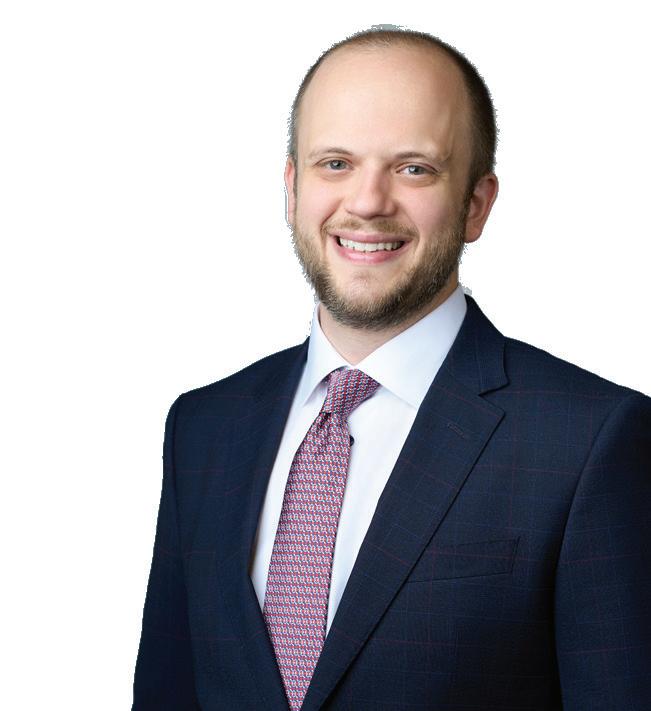

ACCOLADES AWARDS AND FIRM AWARDS
Kelley Kronenberg has been the recipient of numerous awards and honors both firm-wide and for a number of our practices, including individual accolades. Below is a select list of recognition and awards:
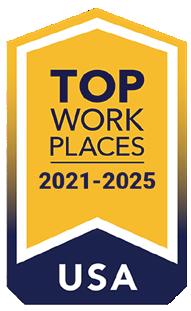

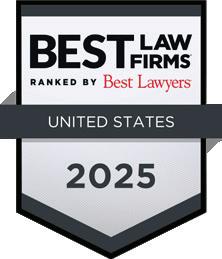

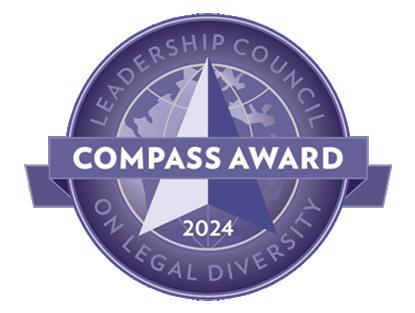





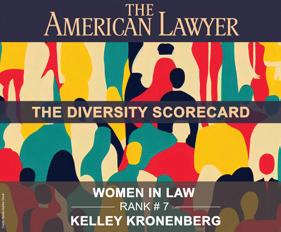

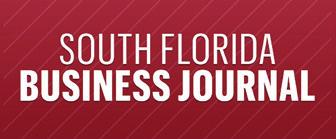
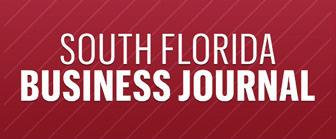
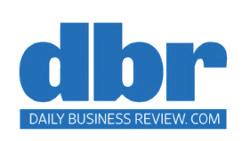





OUT & ABOUT KELLEY KRONENBERG



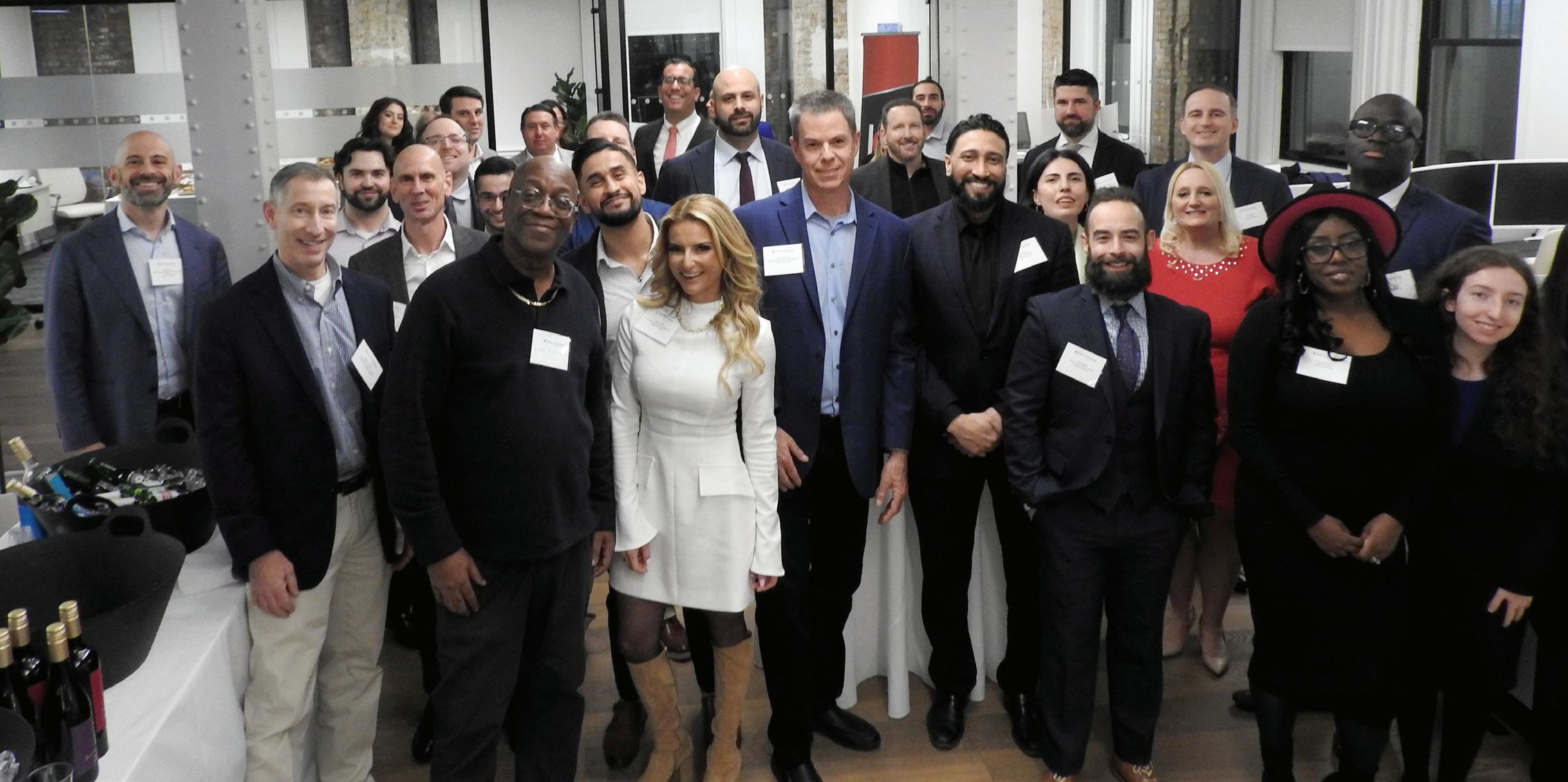
Association of the First Judicial Department



MEET OUR TEAM AT THESE UPCOMING EVENTS
Network of Bar Leaders Annual
Awards Reception and Dinner
April 22nd
Time: 5:30 PM – 10:30 PM
Location: Harvard Club of New York City
Target Market Mid-Year Meeting
May 6th-8th
Location: Hilton Anatole Dallas
New York City Association of Insurance
Women Annual May Luncheon
May 9th
Time: 11:30 AM – 2:30 PM
Location: Tribeca Rooftop, NYC
2025 IRMI Transportation Risk Conference
June 2nd – 4th
Location: OMNI Las Colinas, TX
AON Casualty Risk Consulting Conference
June 9th -11th
Location: Lowe’s Sapphire Falls, Orlando, FL
IACP New York Conference
June 25th
Time: 8:30 AM – 7:00 PM
Location: The University Club, NYC
more than with over the convenience of
510 20 230
Employees Attorneys Locations
Founded in 1980, Kelley Kronenberg is an award winning, multi-practice national law firm with 510 employees, 230 attorneys, and 20 locations throughout Florida and the United States. We are privileged to represent large public and private companies, small businesses, and individuals nationwide. With more than 40 practice areas, and growth on the horizon, we offer a comprehensive catalog of legal services to protect your legal interests in business and at home. Our firm is progressive and technologically advanced, while remaining true to our customer service heritage: integrity, ingenuity, and sincerity. Ever mindful of our history, but intensely committed to our future, we offer our clients a small firm feel with large firm resources.

LOCATIONS

FORT LAUDERDALE
10360 W. State Road 84
Fort Lauderdale, FL 33324
Phone: (954) 370-9970
ORLANDO
20 North Orange Avenue, Suite 704
Orlando, FL 32801
Phone: (407) 648-9450
TAMPA
1511 North Westshore Blvd., Suite 400
Tampa, FL 33607
Phone: (813) 223-1697
DAYTONA
128 Orange Avenue, Unit 306
Daytona Beach, FL 32114
Phone: (754) 888-5437
NEW YORK CITY
111 Broadway, Suite 1205
New York, NY 10006
Phone: (845) 306-7867
CHICAGO
20 N. Clark Street, Suite 1150
Chicago, IL 60602
Phone: (312) 216-8828
JACKSONVILLE
10245 Centurion Parkway N, Suite 100
Jacksonville, FL 32256
Phone: (904) 549-7700
MERRILLVILLE
233 E. 84th Drive, Suite 200
Merrillville, IN 46410
Phone: (317) 731-6243
BY APPOINTMENT ONLY
ALBANY
401 New Karner Road. Suite 301
Albany, NY 12205
Phone: (845) 306-7867
SHORT HILLS
51 John F. Kennedy Parkway
First Floor West
Short Hills, NJ 07078
Phone: (908) 403-8174
MIAMI
220 Alhambra Circle, Suite 410
Coral Gables, FL 33134
Phone: (305) 503-0850
NEW ORLEANS
400 Poydras Street, Suite 2400
New Orleans, Louisiana 70130
Phone: (504) 208-9055
TALLAHASSEE
6267 Old Water Oak Road, Suite 250
Tallahassee, FL 32312
Phone: (850) 577-1301
DALLAS
5956 Sherry Lane, 20th Floor
Dallas, TX 75225
Phone: (983) 999-4640
WEST PALM BEACH
1475 Centrepark Blvd., Suite 275
West Palm Beach, FL 33401
Phone: (561) 684-5956
INDIANAPOLIS
10475 Crosspoint Blvd., Suite 218
Indianapolis, IN 46256
Phone: (317) 731-6243
NAPLES
3080 Tamiami Trail E., Suite 322
Naples, FL 34112
Phone: (239) 990-6490
BOSTON
90 Canal Street
Boston, MA 02114
Phone: (866) 643-9734
ATLANTA
1100 Peachtree Street NE, Suite 200
Atlanta, GA 30309
Phone: (404) 990-4972
FLORIDA KEYS
91760 Overseas Highway, Suite 100
Tavernier, FL 33070
Phone: (305) 928-6999


